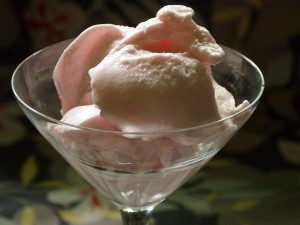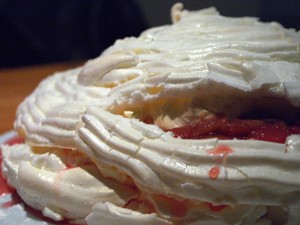 Last winter, my friend Kate and her family moved into an enormous and ancient pile of a house in one of the nearby villages. You know the sort of house: the street is named after it; it’s got medieval bits, Georgian bits and Victorian bits; there are wonderful corners all over the place for the kids to play hide-and-seek in; and there’s a huge, leafy garden I’d give my right arm for.
Last winter, my friend Kate and her family moved into an enormous and ancient pile of a house in one of the nearby villages. You know the sort of house: the street is named after it; it’s got medieval bits, Georgian bits and Victorian bits; there are wonderful corners all over the place for the kids to play hide-and-seek in; and there’s a huge, leafy garden I’d give my right arm for.
Part of Kate’s garden appears to have been looked after, a century or so ago, by a kitchen gardener with a fondness for rhubarb. Rhubarb crowns grow very slowly indeed, but Kate’s rhubarb patch, having been around for a good long while, is now about the size of a couple of transit vans. No one family can consume that amount of rhubarb in one year without severe intestinal upset, so a few months ago she gave me a few kilos of stalks. Since then, they’ve been sitting, chopped and cleaned, in the freezer, coming out occasionally to be stewed and consumed with custard. Time to ring the changes – here’s a non-custardy application of rhubarb which is grown-up enough to be wheeled out at your next dinner party. There’s a lovely balance of tart and sweet in this sorbet, and it’s a glorious colour. You’ll find it works well as an in-between-courses palate cleanser, or as a dessert. Leave any custard well alone; this stands up on its own.
To make about a pint and a half of sorbet, depending on your rhubarb’s age and water content, you’ll need:
1kg rhubarb
200g caster sugar
30ml water
Put all the ingredients in a saucepan and simmer very gently with the lid on until all the rhubarb has collapsed into a greenish mush (about 20 minutes). Remove from the heat. Strain through a jelly bag, a fine sieve or a muslin-lined colander for several hours or overnight and let gravity do its work, without poking at the mixture – you want the juice and only the juice. You’ll notice that the solid bits of rhubarb left in the jelly bag look a lot like wet hay; all the pinkness will be in your juice.
Eventually, you’ll have a bowl of pink, fragrant syrup. Chill the syrup in the fridge for at least six hours.
Follow the instructions on your ice-cream maker, or pour the syrup into a freezerproof box and put straight in the freezer, removing after an hour to attack with an electric whisk to break up the ice crystals. Freeze for another thirty minutes and whisk again, then keep repeating every thirty minutes until you have something that’s recognisably sorbet. This sorbet will keep in the freezer for months, but I doubt you’ll be able to leave it alone for that long.

